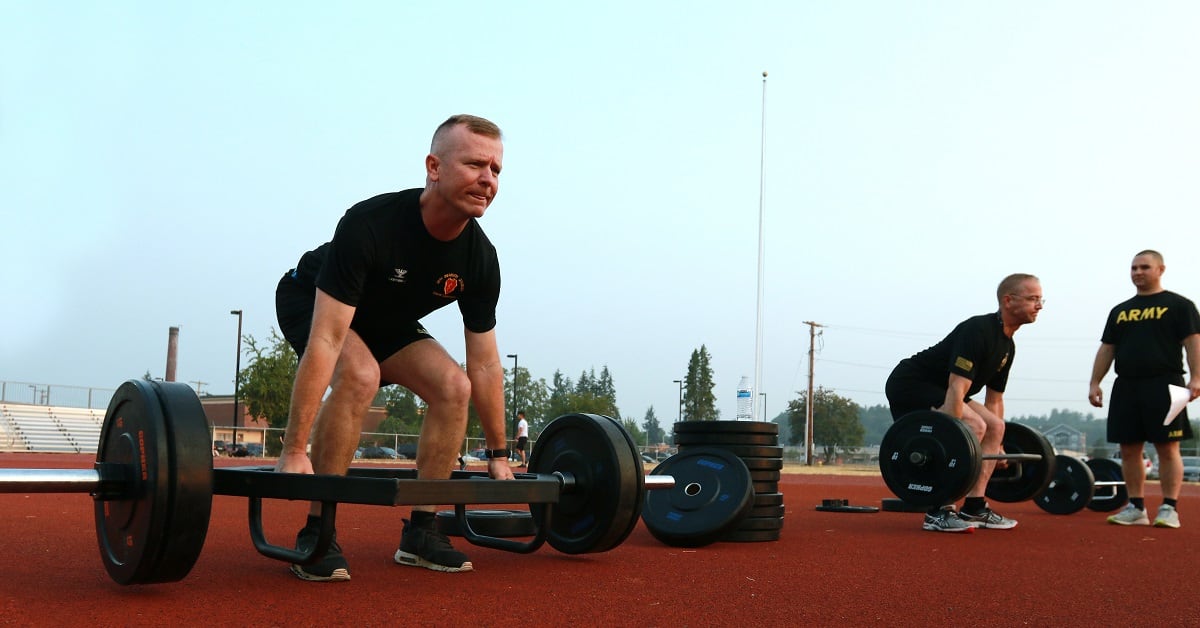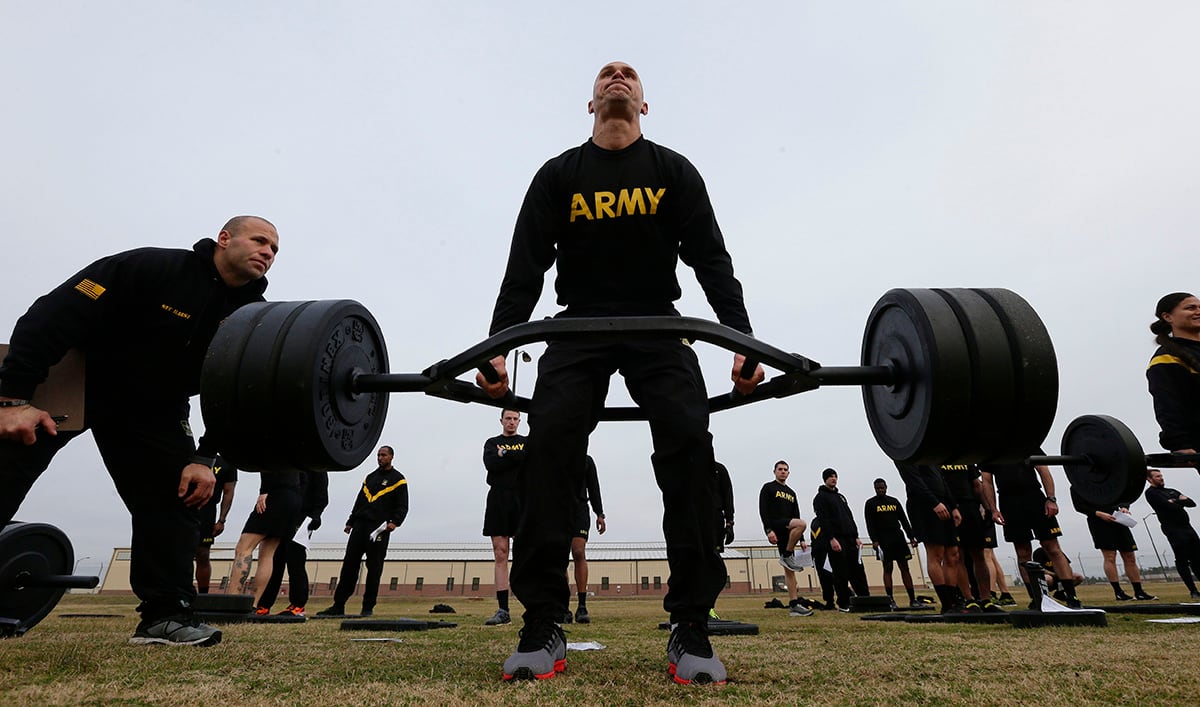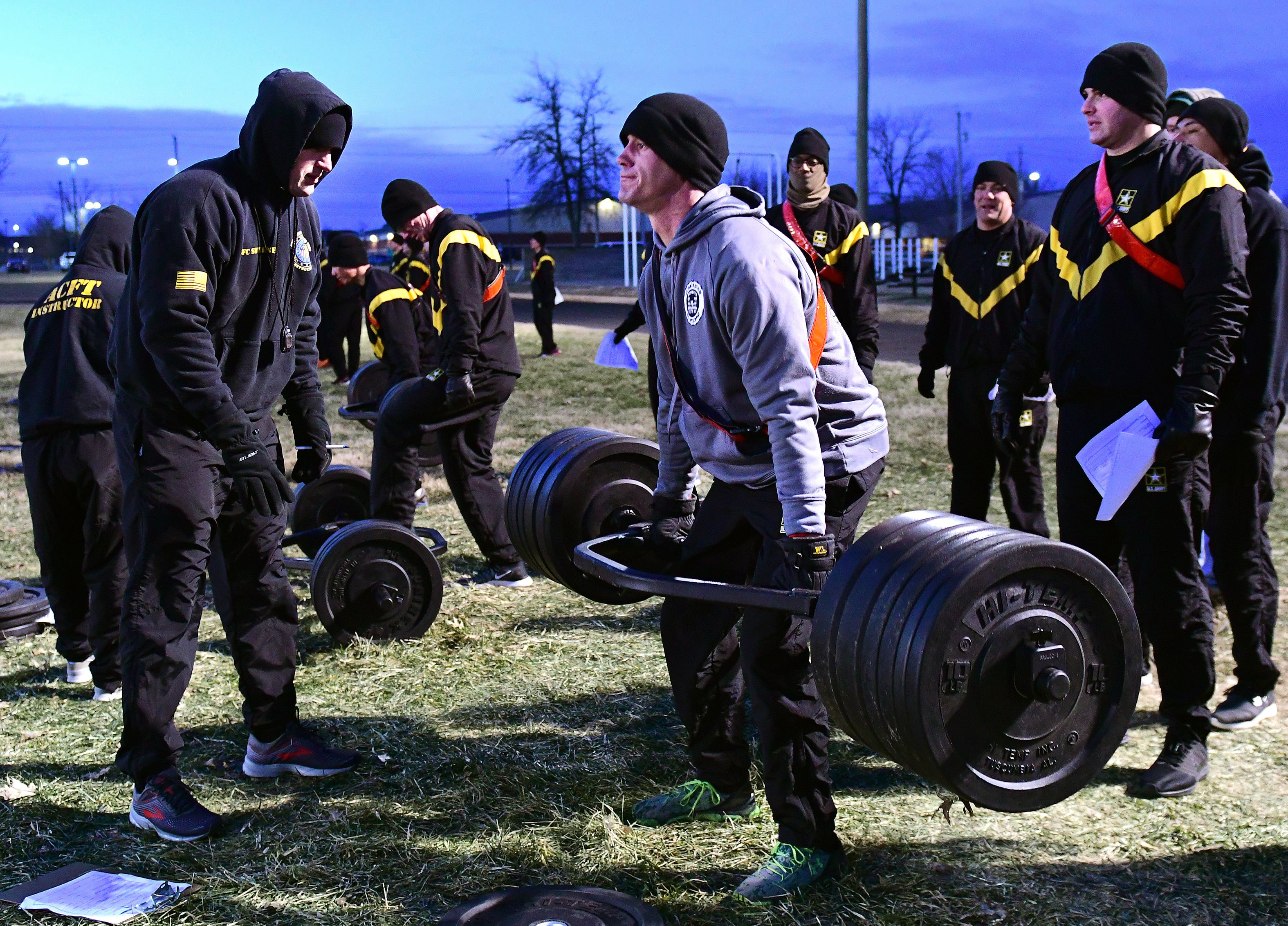FORT MONROE, Va. ― As the Army begins training for and taking the new combat fitness test, leaders from Training and Doctrine Command addressed some common concerns surrounding the test, including injury prevention, availability of equipment and technique for the six events.
Starting in October, the entire Army will take two practice tests roughly six months apart. Then, in fall 2020, the ACFT is scheduled to become the Army physical test of record.
Over the past year, 63 Army Reserve, National Guard and active-duty battalions were fielded the equipment to train for and take trial ACFTs.
But for nearly a decade, the Army has had functional fitness training guidelines that should have eased the culture shock for soldiers, TRADOC’s top NCO, Command Sgt. Maj. Timothy Guden, told Army Times.
“In 2009-ish, we released our new PRT — Army physical readiness training — and that wasn’t received real well," Guden said. But “the ACFT is a culminating event to all of that work that we’ve been putting into PRT up to that point.”
The PRT included events like single-leg dead-lifts, leg tucks, squat jumps and alternating grip pull-ups, as well as other load-bearing exercises.
“If you’re now just starting to do PRT because the ACFT is here, yeah, there are some concerns," Guden said. "For instance ... the maximum dead-lift. Some of our exercises that are in PRT go right into performing that test event correctly.”
One common concern, especially by National Guard units in more remote parts of the United States, is that the availability of equipment could inhibit preparation for the test.
RELATED

However, the new commander of TRADOC, Gen. Paul E. Funk II, said soldiers can be preparing for the test today without the gear.
“There’s a manual to train this and there are ways to train without having the exact equipment," he said.
Ammo cans, water-filled jerrycans and sandbags, for instance, can be used as weighted items in place of a trap bar and plates, medicine balls and kettlebells.
“It’s all about a mindset change," Funk said. "You don’t need to practice the test. What we want you to do is functional fitness. Work on your core. Work on your endurance. Work on muscle fatigue. All those things that make you much more fit.”
The National Guard Bureau said in a statement to Army Times that their equipment for the new ACFT is being acquired through Army Materiel Command and delivered to every state, which has the same timeline for implementation as the active component and Army Reserve.
Additionally, more than 5,000 soldiers and non-commissioned officers are being trained by the Guard to provide instruction on safe training and testing for other troops, according to Maj. Rob Perino, National Guard Bureau official spokesperson.
RELATED

“TRADOC is working closely with partners in the Army National Guard to monitor pilot testing, equipment fielding and the overall training strategy to support the improved test and improve unit fitness levels,” Perino said. “Seven National Guard battalions were specifically chosen for the field test in order to evaluate and solve minor logistical challenges involved with remote locations."
As far as physical training injuries, Funk said it’s still too early to tell how rates will be impacted with the new ACFT.
“One of the things we’re trying to combat of course is the musculoskeletal injuries that kids were getting,” he said. “So we’re trying to change fitness so we strengthen things like our core. That’s actually part of the reason to change.”
Guden said he understands the concerns some soldiers have about the change to the new test, but cautioned that they should hold off lamenting too much until they’ve actually taken it.
“I think there are concerns. I think there’s not just concerns from the physical ability to have the equipment on hand, but I think there’s also concerns in technique and experience,” Guden said.
But in the end, “there shouldn’t be anybody speaking negatively toward the ACFT until they have done it,” he added. “That’s sort of my parting words.”
Kyle Rempfer was an editor and reporter who has covered combat operations, criminal cases, foreign military assistance and training accidents. Before entering journalism, Kyle served in U.S. Air Force Special Tactics and deployed in 2014 to Paktika Province, Afghanistan, and Baghdad, Iraq.




